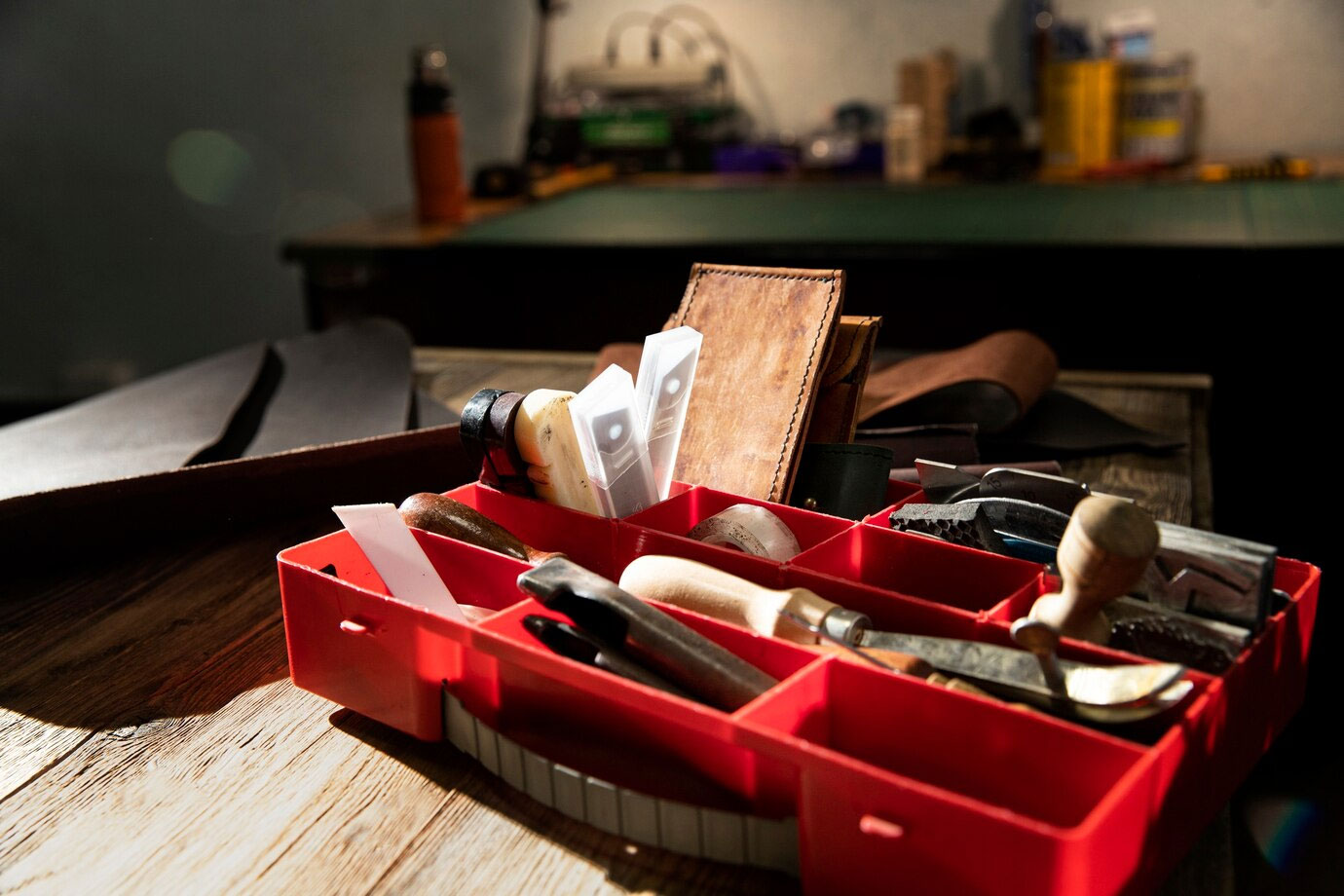A carpenter’s toolbox is an essential collection of tools and aids that carpenters use to measure, cut, shape, and join materials, primarily wood, in the construction and repair of buildings, furniture, and more. This toolbox isn’t just a physical box; it represents a carpenter’s mobile workstation, containing tools that are fundamental to performing various tasks efficiently and with precision.
The concept of a carpenter’s toolbox has evolved significantly over the years. Traditionally, it was a literal wooden box where hand tools were neatly arranged. Today, it can be a large, portable tool chest, a tool belt, or even a rolling cabinet, depending on the job requirements and the carpenter’s mobility needs.
**Essential Tools in a Carpenter’s Toolbox**
The contents of a carpenter’s toolbox can vary widely, but certain tools are fundamental:
1. **Hammer** – A classic tool, essential for driving nails, fitting parts, and breaking objects apart.
2. **Tape Measure** – Crucial for obtaining accurate measurements, a staple in any toolbox.
3. **Utility Knife** – Used for cutting materials like carpet, cardboard, and drywall.
4. **Chisels** – For carving out wood, cleaning out joints, and shaving wood.
5. **Levels** – To ensure everything is perfectly horizontal or vertical; includes spirit levels and laser levels.
6. **Screwdrivers** – Both flathead and Phillips head, for driving screws into various materials.
7. **Pliers** – Including needle nose and adjustable pliers, for gripping and bending materials.
8. **Saws** – Various types, including hand saws, back saws, and power saws, each suited for different tasks.
9. **Square** – For marking and measuring right angles, crucial in ensuring proper alignment.
10. **Drill** – Both manual and power drills, for making holes in wood, metal, or drywall.
**Specialized Tools**
Beyond the basics, many carpenters carry specialized tools tailored to their specific trade requirements:
– **Router** – For hollowing out an area in hard materials like wood or plastic.
– **Planer** – For smoothing out the surface of wood.
– **Jigsaw** – For cutting arbitrary curves and shapes into wood or metal.
**Maintenance of Tools**
Proper maintenance of tools is crucial in a carpenter’s toolbox. Regular cleaning, sharpening of blades, oiling of components, and proper storage all contribute to the longevity and effectiveness of the tools. Many carpenters take great pride in the condition of their tools, as well-maintained tools reflect on their professionalism and skill level.
**Technological Advancements**
The integration of technology in carpentry tools has brought about significant changes in a carpenter’s toolbox. Modern tools now often include laser and digital technologies for improved accuracy and efficiency. For example, digital measuring tapes and laser-guided levels have become more commonplace, enhancing the precision with which carpenters can work.
**Education and Safety**
Understanding the proper use and safety precautions of each tool is as important as the tools themselves. Many carpenters undergo formal training or apprenticeships where they learn not only the skills of their trade but also the best practices for tool maintenance and safety, including the correct use of personal protective equipment (PPE).
**Conclusion**
A carpenter’s toolbox is more than just a container for tools; it is a carefully curated selection of equipment that enables carpenters to perform their craft with expertise and precision. Whether a novice or a master craftsman, the toolbox is a fundamental component of the carpentry profession, symbolizing both the skill of the trade and the pride of the craftsman. As tools and technology evolve, so too will the contents of the carpenter’s toolbox, continually adapting to meet the needs of modern construction and design.

Leave a Reply